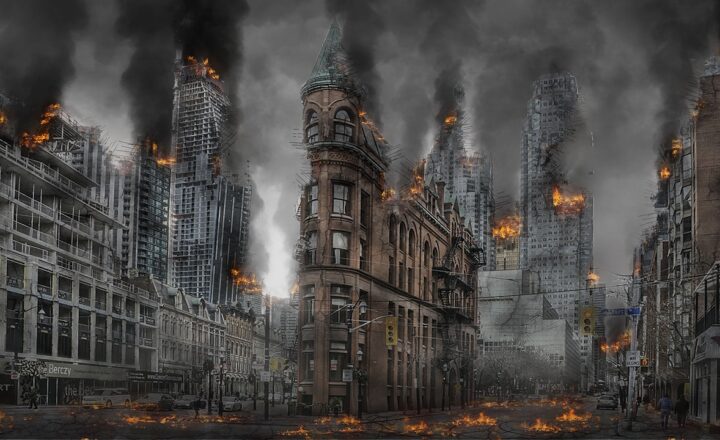How a Simple Typo Changed the Course of History in Unbelievable Ways
November 16, 2024

The concept that the smallest detail can lead to the most unexpected outcomes has been a theme throughout history. A simple typo—a misspelled word, an incorrect figure, or a misplaced point—has had far-reaching consequences that forever altered the course of events. This article explores various instances where typographical errors influenced significant historical outcomes.
1. The Great Typo of 1960: The Presidential Campaign of John F. Kennedy
The 1960 presidential campaign is often remembered for John F. Kennedy’s youthful energy and Grace Kelly’s celebrity endorsement. However, a typo in a campaign material almost altered its trajectory dramatically. A press release by the Kennedy campaign mistakenly stated he would focus on keeping “the good fight on both sides of the aisle,” instead of “the good fight both sides of the aisle.”
This minor error sparked a series of unfavorable interpretations that suggested Kennedy was attempting to appeal to both the liberal and conservative factions of the Democratic Party, which backfired and led to questions about his loyalties. Fortunately for Kennedy, he had a strong team that quickly corrected the narrative, but this brief moment could have changed public perception dramatically.
2. The “Apocalypse” Typo: The Book that Changed a Generation
In 1956, the publishing company Harper & Brothers printed a new edition of the Bible. Unfortunately, an inadvertent typo in the Ten Commandments turned the phrase into “Thou shalt commit adultery.” This error was dubbed the “Wicked Bible” or the “Adulterous Bible”.
The consequence? The printing led to immense embarrassment for the publishers, and the entire edition was ordered to be destroyed. Only a handful of copies survived, making them some of the most valuable books today—valued at hundreds of thousands of dollars.
This single typographical mistake not only highlighted the importance of proofreading religious texts but also raised questions about interpretation, context, and legacy. It also inadvertently contributed to the sensation around the text, intriguing future generations about the mistakes in publications.
3. A Typographical Twist in World War II: The Codename Mistake
During World War II, intelligence was everything, and the US Army was extremely cautious about its operations’ confidentiality. However, a simple typo in a military code inadvertently revealed crucial information that influenced troop movements.
A message intended to instruct troop divisions was mistakenly sent out with incorrect coordinates due to a mistyped figure, leading to significant misallocation of resources. As a result, this error gave the enemy critical insight into US strategies. While the actual impacts were difficult to trace, military historians argue that it may have cost lives and time, affecting various battles’ ultimatums throughout the Western Front.
4. The Internet Giant: Amazon’s Unexpected Name Change
Jeff Bezos’s company began its life as “Cadabra,” designed to evoke the magic of books. However, due to a miscommunication—a typo in a legal document that read “Cadaver”—the name was hastily changed. Ultimately, he decided on the name “Amazon”, inspired by the river, as it represented vast selection and a commitment to being customer-centric.
This typo inadvertently led to the brand’s transformation into one of the world’s largest e-commerce platforms. While Bezos was looking for a magical touch for his book-selling venture, it turned into an empire that encompasses everything from cloud services to smart devices.
5. The Unintentional Creation of a Culinary Trend
Interestingly, typos have been known to create culinary trends as well. The popular dish “Szechuan Chicken” has undergone numerous mutations throughout the years due to typographical misunderstandings and mispronunciations occurring in restaurant menus.
Originally, it started as “Szechwan” but was commonly misprinted as “Szechuan” on several menus because of confusion regarding pronunciation. This change not only affected marketing in restaurants but also simplified its reference, leading to its popularization across America. The dish’s evolved flavor profile and evolving listing have turned it into a cultural phenomenon that still thrives today.
6. The Stock Market Crash: Typographical Trading Errors
As technology advanced, the stock market began to rely heavily on electronic trading systems. However, small typing errors can lead to major repercussions. In 1987, a typo contributed to the events leading to Black Monday, when the stock market crashed unexpectedly.
A trader erroneously entered a sell order at 16,000 rather than 1,600 shares, which triggered a domino effect across the trading floor. This typographical error magnified panic among traders, leading to a massive sell-off that wiped out billions in just one day. The repercussions for many financial institutions were colossal, prompting significant regulatory changes and introducing more robust checks and balances in electronic trading.
Conclusion: The Power of a Simple Typo
The examples provided highlight just how powerful a seemingly insignificant typo can be in shaping history. Whether through miscommunication, unintentional marketing, or unforeseen consequences in world affairs, each of these errors underscores the importance of attention to detail. This whimsical exploration into historical typographical errors serves as a reminder that even the smallest mistakes can have monumental impacts, from altering political landscapes to creating culinary sensations.
As we continue to navigate a world dominated by technology and communication, it becomes crucial to remain vigilant about our word usage and how one simple mistake could unintentionally rewrite history for better or worse.








